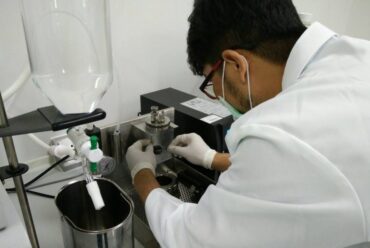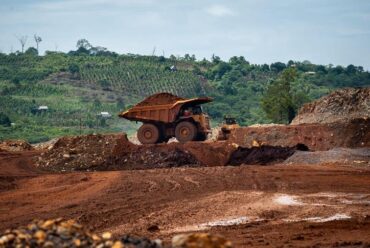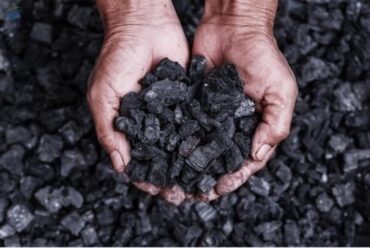Various Types and Quality of Coal
Coal is a type of fossil fuel that is still widely used today. In general, coal is used as an alternative fuel in industry, especially large-scale industries that require affordable resources.
In a sense, this one fossil fuel is a sedimentary rock formed from organic deposits. The main constituents of these deposits are plant remains which are then formed through a long process. The main elements that make up coal are carbon, oxygen and hydrogen. This element makes coal reliable as an energy source.
Although it can be used as an affordable alternative energy source, coal itself has several different types. The different types of coal are influenced by their quality.
CALORIES DETERMINE THE QUALITY OF COAL
One element that greatly influences the quality of coal is the calorie content in it. This is due to the important role of calories which will create heat energy when the coal is used.
In this case, the higher the calorie content of a coal, the better the quality of the coal. Therefore, the process of classifying the types of coal available is based on their caloric content.
Also read: Know How Coal Is Formed To Become Fuel
TYPE AND QUALITY OF COAL ACCORDING TO SNI
One of the indicators used to determine the quality of coal is referring to the Indonesian National Standard. In this case, according to standardized standards, coal with SNI indicators is divided into two, namely:
1. BROWN COAL
Brown coal or low energy coal is the first type of coal called SNI. As the name suggests, this type of coal has a low rank and tends to be soft, brittle, and contains a fairly high water content.
In addition, brown coal consists of soft low energy coal and lignite coal which exhibits a wood structure. Judging from the number of calories, brown coal has a calorific value of <7000 per gram in dry-ASTM form.
2. HARD COAL
Another type of coal according to SNI is hard coal or high energy coal. In this case, all types of coal that have a higher rank than brown coal which has the characteristics of being compact, harder, and has a relatively low moisture content are included in the hard coal category.
Another characteristic of hard coal is that the wood structure is no longer visible and is relatively resistant to physical damage that occurs due to handling. When viewed from the calorific value, hard coal has calories >7000 per gram in dry-ASTM form.
It can be said that calories determine the quality of the coal used.
Read also: Increasing The Utilization Of Coal And Minerals For The Domestic Sector Is Increasingly Encouraged
TYPE AND QUALITY OF COAL ACCORDING TO ASTM
ASTM or American Society for Testing and Materials divides the type and quality of coal with more points. As for several types and qualities of coal according to ASTM are as follows:
1. ANTHRACITIC RANK
The type of coal with good quality is called rank anthracitic in the standard used by ASTM. This rank of coal is considered to have the best quality because it has a fixed carbon percentage of 86% to 98%.
Coal that is included in the anthracitic rank consists of several different groups, namely:
Meta – anthracite
Meta-anthracite is an anthracite rank coal group which has the best quality and grade. This type of coal has a fixed carbon content of up to 98% and has a volatile matter content of about <2% in a dry state.
Anthracite
Anthracite is a coal group in anthracite which has quite good quality. This type of coal has a fixed carbon content with a percentage of about >92% to <98%. In addition, the percentage of volatile matter content in it is about >2% to <8% in a dry state.
Semi – anthracite
Semi-anthracite is a coal group in the anthracite rank which has poor quality. Semi-anthracite coal contains fixed carbon with a percentage of >86% to <92%. In addition, the volatile matter content in this coal is around >9% to <14% in a dry state.
The three types of coal above are various types of coal which are included in the anthracite rank. Each type of coal has a different fixed carbon content and affects its quality.
2. BITUMINOUS RANK
Another type of coal in the standard used by ASTM is rank bituminous. In short, coal which is in this bituminous rank has a fixed carbon percentage of around <69% to <86%. Also, the volatile matter content in coal is about >32% to <22%.
Bituminous rank coal consists of several groups, namely:
Low – volatile bituminous
Low-volatile bituminous coal is classified as bituminous with a fixed carbon content of >78% to <86%. Meanwhile, the volatile matter content in this coal is around >14% to <22% in a dry state.
Medium – volatile bituminous
Medium – volatile bituminous is a coal group in the bituminous rank that has a fixed carbon content of >69% to 78%. In addition, this type of coal has a volatile matter content of >22% to <31% in a dry state.
High – volatile bituminous
High – volatile bituminous is a group of coal rank bituminous with the lowest position. This group is divided into several types, namely:
rank A has a fixed carbon percentage of <69%, volatile matter >31%, and a calorific value of >14000 BTU/lb in dry condition.
rank B has a calorific value of >13000 BTU/lb to <14000 BTU/lb dry.
rank A calorific value >11500 BTU/lb to 13000 BTU/lb dry.
Thus some reviews about the types and types of coal that you need to know. Actually, there is one more type of coal rank, namely rank lignite which is the lowest quality coal.







